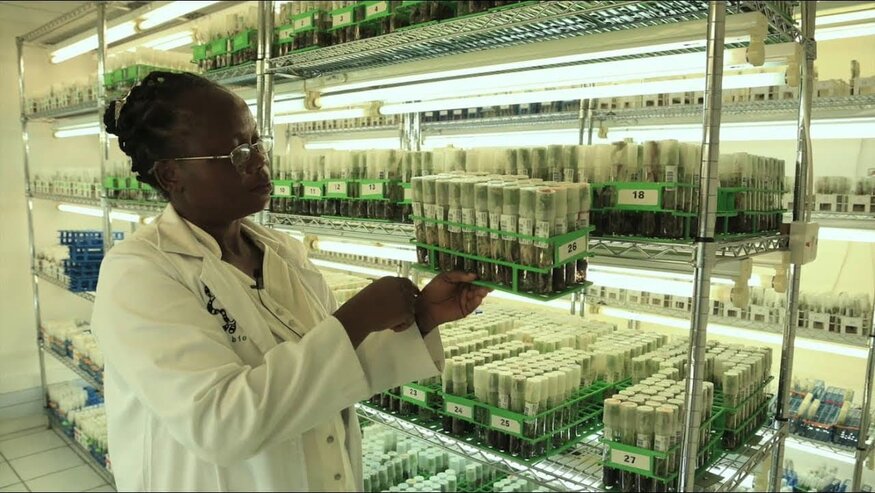Thoughts on the Inaugural International Day of Plant Health

11 May 2022
I suspect that the well-being of plants is not much on people’s minds these days. Did you know that 2020 was the International Year of Plant Health, for example? We have had other things to worry about, after all. But plants do get diseases too, as anyone can testify who has watched their rose bush or potted sage succumb to powdery mildew, despite caring for it perhaps even a little too obsessively of late.
That can be distressing enough, but when it’s the plants that feed us – rather than just keep us company during lockdowns – that get sick, things can get really serious.
Late blight has been implicated in the Irish Potato Famine of the 1840s, and Panama disease led to huge losses on Central American banana plantations in the 1950s. Pests and diseases cause global yield reductions of 20 to 30 percent for staple crops like wheat, rice, maize and soybean, and trying to cut down such hits with pesticides can be harmful to both the environment and human health.
In time, plant breeders do come up with new, more resistant varieties; but, just like the coronavirus has done, the bugs that attack crops also mutate, and try again.
And again. Late blight still threatens potatoes worldwide, and a new strain of Panama disease is now attacking the Cavendish bananas that replaced the Gros Michel type in our supermarkets after the first wave of the disease swept through.
This is sometimes called the Red Queen effect, after the character in Lewis Carroll’s Through the Looking Glass, who said to Alice: “Now, here, you see, it takes all the running you can do, to keep in the same place.”
Even at the best of times, plant breeders, both in the private and the public sector, must do a lot of running just to stay one step ahead of the pests and diseases that undermine our food supply.
And, with climate change, these are definitely not the best of times. The International Day of Plant Health is the perfect time to reflect on, and be thankful for, the one thing without which they would not be able to walk, let alone run.
What is absolutely essential to plant breeding is diversity. That means both all the different past commercial cultivars of each crop, and also heirloom or traditional farmers’ varieties, and wild plants that are related to the crop too.
What breeders do is look carefully at all this diversity, and shuffle it around into new, and better, combinations: plants that are higher-yielding, tastier, more nutritious and, hopefully, more resistant to pests and diseases.
There are lots of ways of doing this, but none of them are possible without the diversity itself. It was by looking at diversity among the wild relatives of the cultivated potato, for example, that plant breeders at the International Potato Centre were able to develop a new, late blight-resistant variety called CIP-Matilde earlier this year.
Unfortunately, we are losing crop diversity. A recent review showed that diversity within our agricultural crops was being eroded in 80 percent of the cases studied, covering the past several decades. That leaves plant breeders with fewer chances of finding what they need to fight new diseases, and the next iteration of old diseases – and thus with fewer options to ensure our food supply.
We need to conserve crop diversity before it’s too late. Again, we can do that in lots of different ways, but storing seeds and other plant parts in genebanks – including the Svalbard Global Seed Vault – is cost-effective and convenient for researchers, breeders and farmers who want to get hold of diversity quickly, easily and safely.
Healthy genebanks are essential for healthy crops, healthy global agriculture and healthy people. Bad as it has been, the agricultural equivalent of the COVID-19 pandemic would be much worse even than what we have gone through in the past couple of years. Nobody would want that on their mind, or their conscience.
The opinions expressed here are those of the author(s) and do not necessarily reflect the opinions or views of the Crop Trust. The Crop Trust is committed to publishing a diversity of opinions on crop diversity conservation and use.
We'd like to hear from you about this or any of our other articles. Reach out to us with news tips or your thoughts at editor@croptrust.org.
Categories: Genebanks, Food Security, Nutritional Security

